Shaw captures the ancient art of ceramics in its versatile collection of ceramic and porcelain tile products. Seven of our porcelain tile collections are manufactured with the environment in mind. At Shaw Floors, we are committed to doing the right thing for the environment, and we partner with Eco-friendly suppliers who share in that commitment. Working with like-minded companies is crucial to creating a healthier ecosystem by reducing the amount of natural resources we consume. Learn More
Kitchen Tile
Kitchen Tile Guide

Tile Tales: The Evolution and Future of Kitchen Tile Flooring in Design
From ancient mosaics to contemporary minimalism, kitchen tile flooring has traversed a remarkable journey, embedding itself deeply in the fabric of architectural and interior design. Its historical significance is profound, originating from civilizations that valued not only utility but aesthetic brilliance. Today, as we stand amidst a blend of technology and artistry, kitchen tile flooring has evolved into a cornerstone of modern architecture and interior design, presenting a palette of endless possibilities.
Material Properties and Sustainability: The Enduring Choice
The durability of kitchen tile flooring is legendary. Its resistance to wear, tear, and the ravages of time makes it a practical choice for spaces that witness daily rituals and routines. Architects and designers appreciate its low maintenance, which translates into long-term cost savings and convenience. Beyond practicality, the eco-friendly aspect of kitchen tile flooring is increasingly relevant. Energy-efficient production processes and recyclability align with the growing demand for sustainable building materials, catering to a world that seeks environmental responsibility in its constructed spaces.
Design Versatility and Aesthetics: A Canvas for Creativity
The design versatility of kitchen tile flooring is unparalleled. Available in an array of colors, patterns, sizes, and finishes, it allows architects and interior designers to craft unique ambiances tailored to specific architectural styles or client preferences. Whether replicating the rustic charm of natural stone or embracing the sleek look of polished porcelain, the aesthetic possibilities are limitless, opening doors to innovative design solutions.
Technical Advancements: Shaping the Future of Design
Technological innovations in the manufacture of kitchen tile flooring have revolutionized its application. Advanced digital printing techniques enable the creation of tiles that mimic natural materials with astonishing accuracy, while enhanced durability and slip resistance add to their functional appeal. These advancements expand the horizon of customizability, allowing designers to push the boundaries of traditional tile applications.
Application Diversity: Beyond the Kitchen
Kitchen tile flooring extends its utility beyond the culinary space. Its use in high-traffic areas, healthcare facilities, and commercial spaces speaks to its adaptability and resilience. Innovative projects around the globe showcase the material’s flexibility, transforming floors into canvases that narrate stories, evoke emotions, and create atmospheres.
Performance and Functionality: Meeting Demands of Modern Spaces
Functional benefits like water resistance and antibacterial properties make kitchen tile flooring an ideal choice for areas demanding hygiene and ease of cleaning. Its suitability for diverse environments – from bustling commercial kitchens to serene residential spaces – is a testament to its versatile performance characteristics.
Sustainability and Environmental Impact: Building a Greener Future
Incorporating kitchen tiles in construction projects contributes significantly to sustainable building practices. Their role in achieving LEED certification and adhering to environmental standards is noteworthy. Additionally, the health and environmental impact of materials used in kitchen tile flooring production and usage is a crucial consideration in contemporary building specifications.
Cultural and Artistic Significance: Bridging Eras
The cultural and artistic relevance of kitchen tile flooring spans global regions, encapsulating traditional designs and modern trends. Contemporary designers are increasingly weaving these tiles into their narratives, creating spaces that harmonize tradition with modernity, and local identity with global aesthetics.
Cost-Effectiveness and Long-Term Value: A Wise Investment
When analyzing cost versus benefits, kitchen tile flooring emerges as a financially sound choice. Its durability and timeless appeal ensure long-term value, often surpassing alternative materials in terms of lifecycle and aesthetic endurance. In numerous scenarios, its application proves not only aesthetically advantageous but also economically wise.
Conclusion: Paving the Path to Innovative Futures
Kitchen tile flooring, with its rich history and dynamic present, is poised to significantly influence future trends in architecture and interior design. Its blend of functionality, aesthetic versatility, and environmental responsibility makes it an essential element in the toolkit of architects, interior designers, and facility managers. As we venture into future projects, the innovative potential of kitchen tile flooring stands as a beacon, inviting us to explore, experiment, and express in ways that transform spaces and experiences.
Disclaimer: The information provided in this article is for general informational purposes only. While we strive to ensure the accuracy and reliability of the information presented, we make no warranties, express or implied, about the completeness, accuracy, reliability, suitability, or availability with respect to the content. Any reliance you place on such information is strictly at your own risk. We recommend consulting with professionals for specific advice tailored to your project’s needs, particularly regarding building codes, regulations, and product specifications.
Under no circumstances shall we be liable for any loss or damage, including without limitation, indirect or consequential loss or damage, arising from the use of, or reliance on, the information provided in this article.
Featured Brands
The Best 10 Kitchen Tile Brands
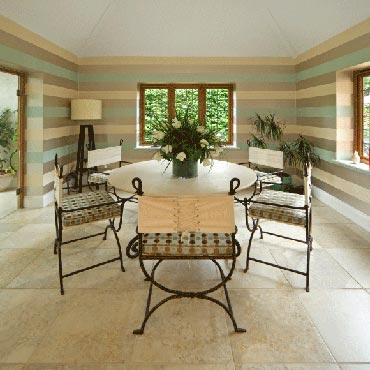
Shaw Tile Flooring
Profile | WebsiteShaw captures the ancient art of ceramics in its versatile collection of ceramic and porcelain tile products. Seven of our porcelain tile collections are manufactured with the environment in mind. At Shaw Floors, we are committed to doing the right thing for the environment, and we partner with Eco-friendly suppliers who share in that commitment. Working with like-minded companies is crucial to creating a healthier ecosystem by reducing the amount of natural resources we consume. Learn More
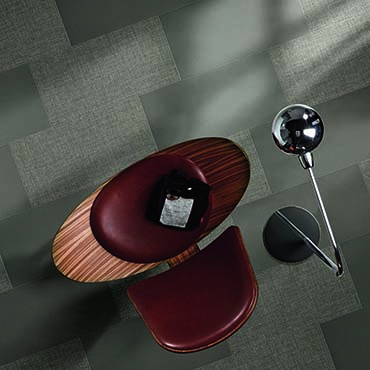
Daltile® Floor Tile
Profile | Website | Install | MaintainTransform any room with DalTile® Floor Tile. Available in porcelain, ceramic, and stone looks, DalTile offers durable, stylish, and easy-to-maintain flooring options perfect for kitchens, bathrooms, living areas, and high-traffic commercial spaces. Learn More
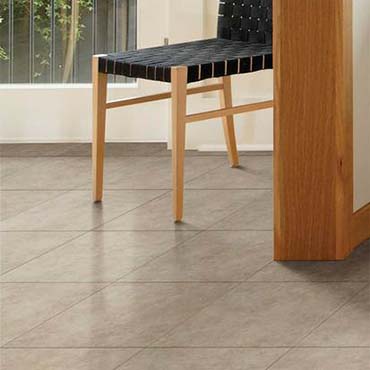
American Olean® Tile
Profile | Website | Warranty | GreenHome is where the heart is, and American Olean is the trusted choice for residential projects. With countless, on-trend design options, the versatility and durability of American Olean tile make it easy to produce stylish, modern designs anywhere in your home. Learn More
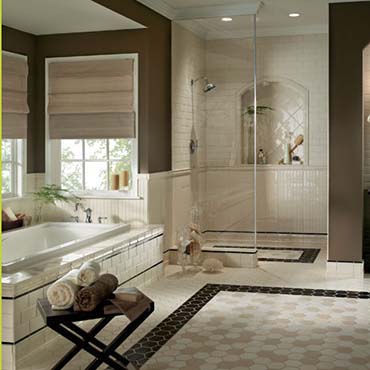
Crossville Porcelain Tile
Profile | Website | Design Tools | Warranty | Install | Maintain | FAQs | GreenAs the first tile manufacturer in Tennessee (est. 1986), Crossville is the leading American manufacturer of beautiful, sustainable solutions that advance the frontiers of tile design. From introducing the nation’s first large-format porcelain tiles, to becoming the first and only net consumer of tile waste materials (meaning we recycle even more than we produce), to developing cutting-edge performance innovations that turn mere surfaces into “breathing” living environments—we are committed to pioneering products and practices that change the way the world views tile. Learn More
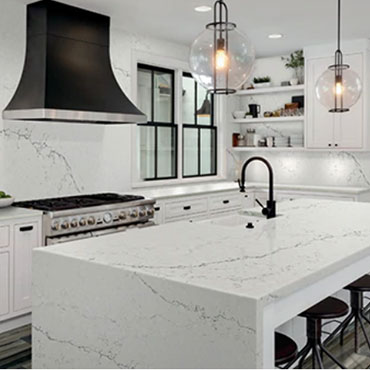
DalTile® Countertops
Profile | Website | Install | Maintain | BlogUpgrade your kitchen or bath with DalTile® Countertops. Choose from quartz, granite, and porcelain surfaces that offer stunning style, lasting durability, and easy maintenance—perfect for modern designs and timeless spaces alike. Learn More

Porcelanosa® Tile Flooring
Profile | WebsiteAmbitious research and development projects have enabled us to release products on the market that have a high degree of added value: wall tiles, floor tiles and porcelain tiles. Learn More

Vitromex® Tile
Profile | WebsiteVitromex® is a mexican company that belongs to the Grupo Industrial Saltillo. Since its foundation in 1967 we manufacture ceramic coverings for floor tiles and wall tiles, as well as sanitary-ware with the highest quality standards. Learn More
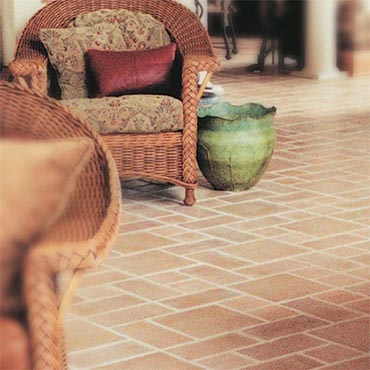
Seneca Tiles
Profile | WebsiteSeneca Tiles Inc., manufacturerand importer of distinctive ceramic tiles, invites you to experience our exciting collection of ceramic tile, available exclusively through leading distributors in North America Learn More

Original Style Tile
Profile | WebsiteOur company is one of Britain’s largest tile manufacturers, our products are available in over 55 countries and over 2000 quality retail shops worldwide. Original Style tiles have been used in such wide-ranging projects as Hollywood film star homes, Arabian mosques, from English country pubs to international opera houses. Learn More
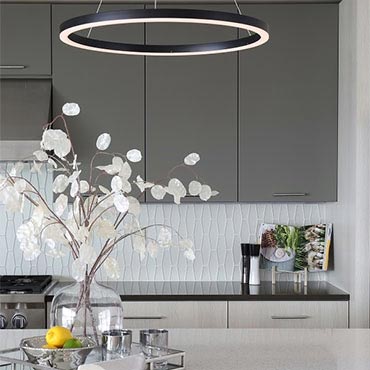
Sonoma Tilemakers
Profile | WebsiteOur rich textures, hand carved designs and fabulous color palette offer limitless design options. Learn More
Kitchen Tile News
Latest Kitchen Tile News
Kitchen Tile...Tiles Unveiled: Revolutionizing Kitchen Spaces through History and Innovation Introduction to Kitchen TileTiles have journeyed through time, evolving from mere functional elements in earthen floors to pivotal design features in modern homes. Their history is deeply intertwined with human civilization, echoing our aesthetic progress and technological advancements.... |










